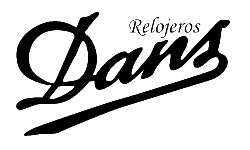W210
Forer@ Senior
Sin verificar
Tras muchos intentos y una cámara nueva he realizado unas fotos que quiero compartir con vosotros ya que en toda la red no hay unas fotos "decentes" del cal 12 de Breitling de mi "famoso" Breitling Navitimer Chronomatic 1806.
Este reloj, tras su compra directa en Alemania
 , ha sido desmontado completamente por José Miguel Frías un relojero de Córdoba y mienbro del foro y tras su revisión ha quedado.. como decirlo... de impresión
, ha sido desmontado completamente por José Miguel Frías un relojero de Córdoba y mienbro del foro y tras su revisión ha quedado.. como decirlo... de impresión


 no tengo palabras... precisamente éste no es un calibre fácil de trabajar.... pero el resultado ha sido de lujo
no tengo palabras... precisamente éste no es un calibre fácil de trabajar.... pero el resultado ha sido de lujo 




Os adjunto más información acerca de este magnífico calibre ya que a mi entender la historia de la relojería no le correspondido en su justa medida

Esta información la podéis encontrar en la siguiente dirección:

Os recomiendo que no la visitéis mucho que engancha

The Chronomatic : Very first Automatic Chronograph in the world
--------------------------------------------------------------------------------
History
The 1960s saw the race for the development of the world's first automatic chronograph : Two groups were fighting in this race : The group of Movado/ Zenith versus Heuer/ Breitling/ Hamilton/ Dubois Depraz. Both groups achieved their aims at about the same time and exhibited their new developments at the Basel Fair in 1969. Both claimed to be the first to introduce the first automatic chronograph in the world. However, the caliber 11 by the group of Heuer/ Breitling/ Hamilton/ Dubois Depraz beat the Movado/ Zenith team.
1965 : the chronograph specialists Breitling and Heuer-Leonidas with Hamiliton-Bruen and Dubois Depraz, who started the development of their project . When the delegation of the four companies met together for the first time in 1965, they were so obsessed with keeping things secret that they gave their project a confidential code name: 99.
During this meeting, the role each house would play was distributed :
Bruen would be in charge of the special automatic mechanism (adapted from Bruen’s "Intramatic" Caliber : Planetary rotor of heavy winding in both direction via gliding pinion)
Dubois-Depraz would be responsible for the chronographic module (chronograph unit 8510 with coulisse-lever switching, equipped with a 12-hour and a 30-minute counter) as well as the oscillating pinion invented by Edouard Heuer.
Breitling and Heuer would develop the other components and oversee the design of the watch dial and case.
22nd of september 1967 : Heuer/ Breitling/ Hamilton/ Dubois Depraz ask for the patent of the Caliber 11
By 1968, the group had carried out the first conclusive tests and developed experimental prototypes. The winding-mechanism and the caliber 11 chronograph, worked marvelously well, even under extreme conditions, with an accuracy close to the norms required of a chronometer
September 1968 : Breitling manufacture a first pre-serie of the Chronomatic : this is the VERY FIRST automatic Chronograph in the world (see at the end of this page pictures of a Navitimer Chronomatic from this first pre-serie)
3rd of March 1969 : after 500,000 Swiss francs spend, the world first automatic chronograph was unveiled, over a month before Basel fair 1969 where the El Primero was introduced.
31st of August 1972 : the patent of the caliber 11 is officially published
--------------------------------------------------------------------------------
Chronomatic technical instructions manual
You need to be a member of the "Navitimer Owners club" to download this manual , please refer to the information page about the club to join : click here
--------------------------------------------------------------------------------
Technical specifications
The Caliber 11:
Beating at 19,800 bps, 13 ¾ lines, "Chronomatic" consists of a basis movement unit and a chrono-section unit. These two units are attached with screws, one on top of the other. The design required that the winding stystem with the crown had to be removed to the position of the 9, at first what it seems like a surprising innovation that all firms agreed would be the best. Since obviously this watch does not often need to be wound up by hand, it follows that the chronograph buttons would be better located on the right side of the case.
Click image to enlarge detailled image of the Caliber 11
A suitable winding mechanism is required for this automatic chronograph. The heavy microrotor that winds the mainspring is housed in the basic movement and has a pointed dead angle of only 11 degrees, which means that even the relatively inactive wearers can always depend on the watch being wound up.
In addition, a special regulator setting was developed for the watch, with excentric setting and moveable spiral block, which allow precise regulation and the smallest error in the timing. These developments are also patented.
The Caliber 12 : The difference between the caliber 11 and 12 lies with the beats. The Caliber 12, which is an updated version beats faster at 21,600 bps. The later versions saw the introduction of the 2 registers instead of 3. The later versions from Breitling are the caliber 14 and 15.
Click on image to enlarge detailled image of the Caliber 11 with microrotor
Breitling also acheive on the Chronomatic to waterproof the Navitimier keeping the sliderule functionnal : This is acheived by making a patented bezel-turning mechanism : this mechanism is still used by Breitling on their B1 model.
Please click on the picture to see a detailed drawing of the system
Click to enlarge detailled image of the sliderule system on the Chronomatic
--------------------------------------------------------------------------------
Pictures of a Navitimer Chronomatic dated September 1968 (Pre-Serie)
You can see some variations from the serie model : completely black bezel to move the slide rude , date in black (red on serie)
Side view of the Chronomatic September 1968 Chronomatic and Navitimer 50th anniversary Front view of the Chronomatic September 1968
Another model of Chronomatic 1968 with an "Arabic" dial witch never see production You can compare it to the serie watch (this one is from 1977) Again a 1968 pre-serie Chronomatic with "Arabic" dials
--------------------------------------------------------------------------------
Differences between Caliber 11 and Caliber 12
DIFFERENCES BETWEEN CALS. 11, 11-C, 11-2 AND 12
CAL. 11
Original basic calibre, 19,800 train (nickel plated)
CAL. 11-C
As Cal.11 but we have changed the arrangement of the calendar. Rapid calendar replacement by a slow calendar. For that, we have changed the calendar wheel No.2556/1 and omitted the two wheels Nos.2543 and 2548. The mainspring and escapement have been checked and rectified.
Cal. 11-2
This is Cal. 11-c altered to 21,600 train. For that we have changed the mainspring:- MgS = 1200, Mgi = 1050, M - 3.5 = 860 at 8 turns of winding. We have also changed the fourth wheel No.225 (72 teeth instead of 66), The escape wheel No 705 (diam. of pinion 0.67 instead of 0.73) and the frequency of the balance and hairspring
No. 721.
Cal .12
Same construction as Cal. 11-2 except that the brass parts are gold plated instead of nickel plated. (Plates, bridges, chronograph plate, etc.)
La Chaux-de-Fonds
December 1st 1972
G.L. Breitling S.A
G Monnier.
Page 2:
IMPROVEMENT OF PARTS FROM THE LAUNCHING
OF THE CHRONOMATIC TO THE PRESENT DAY.
MOVEMENT
1. The setting lever screw No.5443 which broke easily, has been strengthened.
2. The oscillating weight No.1143/1 axle has been strengthened.
3. The arms of the driving gear for ratchet wheel No.1482 have been omitted. It is now a plain wheel in beryllium.
4. Transformed the rapid calendar to slow calendar by changing the date indicator driving wheel No. 2556/1.
5. With the slow calendar, we have omitted the two setting wheels Nos. 2543 and 2548.
6. We have also omitted the transfer on the date indicator guard No.2535, since with this new date indicator, it is not necessary to locate the calendar wheel.
7. With the slow calendar, we have strengthened the date jumper spring No.2575 from 5gm to 8gm.(Force measured on a special dynamometer). By doing this we achieve a cleaner jump and the disc can no longer be misplaced by a shock.
8. The pivot of /the date indicator driving wheel\ No.2556/1 has been enlarged against the risk of breakage.
9. We have formed a location on the /dial rest\ No.145 to facilitate its positioning during assembly.
10. The casing clamps No.166 have been thickened for strength.
11. Mainsprings have been improved.
12. Nivarox 2 hairsprings have been replaced by Isoval 2 which give better results.
13. We use heavier balances, moment of inertia
20 instead of 16.
14. The banking pins are made of nickel silver without surface treatment to prevent the lever from sticking to the pins.
La Chaux-de-Fonds December 1st 1972
G.L. Breitling S.A
G Monnier.
Es pero que os guste. Muchas gracias por todo.
Este reloj, tras su compra directa en Alemania

 , ha sido desmontado completamente por José Miguel Frías un relojero de Córdoba y mienbro del foro y tras su revisión ha quedado.. como decirlo... de impresión
, ha sido desmontado completamente por José Miguel Frías un relojero de Córdoba y mienbro del foro y tras su revisión ha quedado.. como decirlo... de impresión


 no tengo palabras... precisamente éste no es un calibre fácil de trabajar.... pero el resultado ha sido de lujo
no tengo palabras... precisamente éste no es un calibre fácil de trabajar.... pero el resultado ha sido de lujo 




Os adjunto más información acerca de este magnífico calibre ya que a mi entender la historia de la relojería no le correspondido en su justa medida


Esta información la podéis encontrar en la siguiente dirección:

Os recomiendo que no la visitéis mucho que engancha


The Chronomatic : Very first Automatic Chronograph in the world
--------------------------------------------------------------------------------
History
The 1960s saw the race for the development of the world's first automatic chronograph : Two groups were fighting in this race : The group of Movado/ Zenith versus Heuer/ Breitling/ Hamilton/ Dubois Depraz. Both groups achieved their aims at about the same time and exhibited their new developments at the Basel Fair in 1969. Both claimed to be the first to introduce the first automatic chronograph in the world. However, the caliber 11 by the group of Heuer/ Breitling/ Hamilton/ Dubois Depraz beat the Movado/ Zenith team.
1965 : the chronograph specialists Breitling and Heuer-Leonidas with Hamiliton-Bruen and Dubois Depraz, who started the development of their project . When the delegation of the four companies met together for the first time in 1965, they were so obsessed with keeping things secret that they gave their project a confidential code name: 99.
During this meeting, the role each house would play was distributed :
Bruen would be in charge of the special automatic mechanism (adapted from Bruen’s "Intramatic" Caliber : Planetary rotor of heavy winding in both direction via gliding pinion)
Dubois-Depraz would be responsible for the chronographic module (chronograph unit 8510 with coulisse-lever switching, equipped with a 12-hour and a 30-minute counter) as well as the oscillating pinion invented by Edouard Heuer.
Breitling and Heuer would develop the other components and oversee the design of the watch dial and case.
22nd of september 1967 : Heuer/ Breitling/ Hamilton/ Dubois Depraz ask for the patent of the Caliber 11
By 1968, the group had carried out the first conclusive tests and developed experimental prototypes. The winding-mechanism and the caliber 11 chronograph, worked marvelously well, even under extreme conditions, with an accuracy close to the norms required of a chronometer
September 1968 : Breitling manufacture a first pre-serie of the Chronomatic : this is the VERY FIRST automatic Chronograph in the world (see at the end of this page pictures of a Navitimer Chronomatic from this first pre-serie)
3rd of March 1969 : after 500,000 Swiss francs spend, the world first automatic chronograph was unveiled, over a month before Basel fair 1969 where the El Primero was introduced.
31st of August 1972 : the patent of the caliber 11 is officially published
--------------------------------------------------------------------------------
Chronomatic technical instructions manual
You need to be a member of the "Navitimer Owners club" to download this manual , please refer to the information page about the club to join : click here
--------------------------------------------------------------------------------
Technical specifications
The Caliber 11:
Beating at 19,800 bps, 13 ¾ lines, "Chronomatic" consists of a basis movement unit and a chrono-section unit. These two units are attached with screws, one on top of the other. The design required that the winding stystem with the crown had to be removed to the position of the 9, at first what it seems like a surprising innovation that all firms agreed would be the best. Since obviously this watch does not often need to be wound up by hand, it follows that the chronograph buttons would be better located on the right side of the case.
Click image to enlarge detailled image of the Caliber 11
A suitable winding mechanism is required for this automatic chronograph. The heavy microrotor that winds the mainspring is housed in the basic movement and has a pointed dead angle of only 11 degrees, which means that even the relatively inactive wearers can always depend on the watch being wound up.
In addition, a special regulator setting was developed for the watch, with excentric setting and moveable spiral block, which allow precise regulation and the smallest error in the timing. These developments are also patented.
The Caliber 12 : The difference between the caliber 11 and 12 lies with the beats. The Caliber 12, which is an updated version beats faster at 21,600 bps. The later versions saw the introduction of the 2 registers instead of 3. The later versions from Breitling are the caliber 14 and 15.
Click on image to enlarge detailled image of the Caliber 11 with microrotor
Breitling also acheive on the Chronomatic to waterproof the Navitimier keeping the sliderule functionnal : This is acheived by making a patented bezel-turning mechanism : this mechanism is still used by Breitling on their B1 model.
Please click on the picture to see a detailed drawing of the system
Click to enlarge detailled image of the sliderule system on the Chronomatic
--------------------------------------------------------------------------------
Pictures of a Navitimer Chronomatic dated September 1968 (Pre-Serie)
You can see some variations from the serie model : completely black bezel to move the slide rude , date in black (red on serie)
Side view of the Chronomatic September 1968 Chronomatic and Navitimer 50th anniversary Front view of the Chronomatic September 1968
Another model of Chronomatic 1968 with an "Arabic" dial witch never see production You can compare it to the serie watch (this one is from 1977) Again a 1968 pre-serie Chronomatic with "Arabic" dials
--------------------------------------------------------------------------------
Differences between Caliber 11 and Caliber 12
DIFFERENCES BETWEEN CALS. 11, 11-C, 11-2 AND 12
CAL. 11
Original basic calibre, 19,800 train (nickel plated)
CAL. 11-C
As Cal.11 but we have changed the arrangement of the calendar. Rapid calendar replacement by a slow calendar. For that, we have changed the calendar wheel No.2556/1 and omitted the two wheels Nos.2543 and 2548. The mainspring and escapement have been checked and rectified.
Cal. 11-2
This is Cal. 11-c altered to 21,600 train. For that we have changed the mainspring:- MgS = 1200, Mgi = 1050, M - 3.5 = 860 at 8 turns of winding. We have also changed the fourth wheel No.225 (72 teeth instead of 66), The escape wheel No 705 (diam. of pinion 0.67 instead of 0.73) and the frequency of the balance and hairspring
No. 721.
Cal .12
Same construction as Cal. 11-2 except that the brass parts are gold plated instead of nickel plated. (Plates, bridges, chronograph plate, etc.)
La Chaux-de-Fonds
December 1st 1972
G.L. Breitling S.A
G Monnier.
Page 2:
IMPROVEMENT OF PARTS FROM THE LAUNCHING
OF THE CHRONOMATIC TO THE PRESENT DAY.
MOVEMENT
1. The setting lever screw No.5443 which broke easily, has been strengthened.
2. The oscillating weight No.1143/1 axle has been strengthened.
3. The arms of the driving gear for ratchet wheel No.1482 have been omitted. It is now a plain wheel in beryllium.
4. Transformed the rapid calendar to slow calendar by changing the date indicator driving wheel No. 2556/1.
5. With the slow calendar, we have omitted the two setting wheels Nos. 2543 and 2548.
6. We have also omitted the transfer on the date indicator guard No.2535, since with this new date indicator, it is not necessary to locate the calendar wheel.
7. With the slow calendar, we have strengthened the date jumper spring No.2575 from 5gm to 8gm.(Force measured on a special dynamometer). By doing this we achieve a cleaner jump and the disc can no longer be misplaced by a shock.
8. The pivot of /the date indicator driving wheel\ No.2556/1 has been enlarged against the risk of breakage.
9. We have formed a location on the /dial rest\ No.145 to facilitate its positioning during assembly.
10. The casing clamps No.166 have been thickened for strength.
11. Mainsprings have been improved.
12. Nivarox 2 hairsprings have been replaced by Isoval 2 which give better results.
13. We use heavier balances, moment of inertia
20 instead of 16.
14. The banking pins are made of nickel silver without surface treatment to prevent the lever from sticking to the pins.
La Chaux-de-Fonds December 1st 1972
G.L. Breitling S.A
G Monnier.
Es pero que os guste. Muchas gracias por todo.



 me gusta el matiz que le das con la luz al calibre, realzas la peculiar sensación que transmite el calibre 12 con el modulo cronográfico ligeramente por encima del calibre base, la esfera siempre perfecta de los Navitimer te ha quedado de cojo+ç´`es
me gusta el matiz que le das con la luz al calibre, realzas la peculiar sensación que transmite el calibre 12 con el modulo cronográfico ligeramente por encima del calibre base, la esfera siempre perfecta de los Navitimer te ha quedado de cojo+ç´`es 